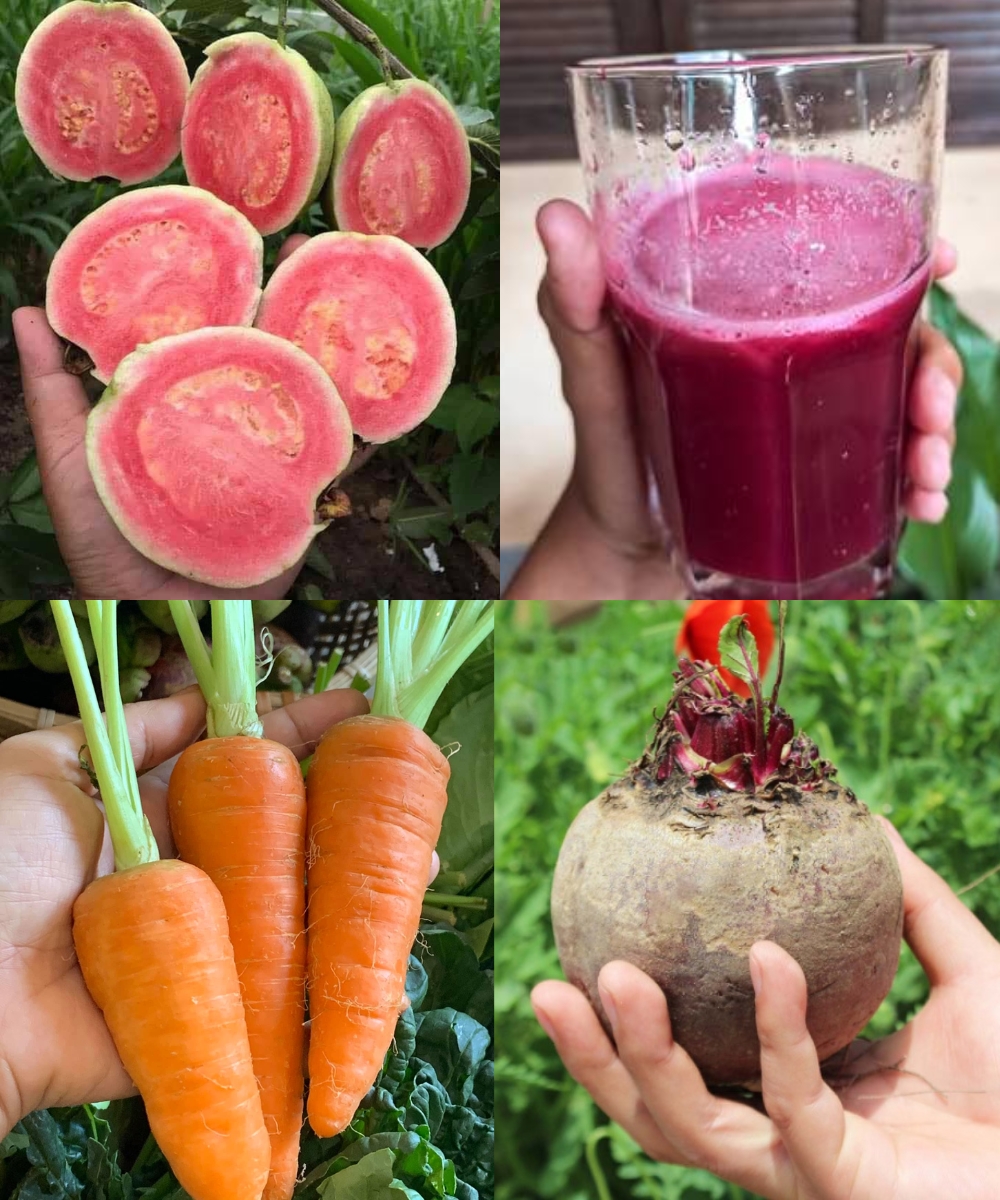ADVERTISEMENT
**Eliminates Anemia, Cleanses Fatty Liver, and Restores Vision: The Power of Nature’s Healing Ingredients**
Anemia, fatty liver disease, and vision problems are common health issues that can significantly impact quality of life. These conditions may develop due to poor diet, lack of physical activity, or environmental factors. However, nature offers us potent solutions in the form of food and herbs that can support the body in healing, boosting energy levels, improving liver function, and restoring vision. In this article, we will explore an incredible natural remedy that can address all three of these health concerns simultaneously.
The combination of **beetroot**, **carrot**, and **spinach** is a powerful trio of ingredients that not only nourish the body but also cleanse and rejuvenate it. These plant-based foods are rich in essential vitamins, minerals, and antioxidants that can play an integral role in treating anemia, cleansing the liver, and supporting eye health. We’ll explore how each of these ingredients works individually and, when combined, how they provide a multifaceted approach to boosting overall health.
We will also delve into the underlying causes of anemia, fatty liver disease, and vision issues, offering insights into how these ingredients can aid in the prevention and treatment of these common ailments.
### **Understanding the Health Problems: Anemia, Fatty Liver, and Vision Impairment**
#### **1. Anemia: A Silent Epidemic**
Anemia is a condition that occurs when your blood lacks enough healthy red blood cells to carry adequate oxygen to your body’s tissues. One of the most common types of anemia is iron-deficiency anemia, which occurs when the body doesn’t have enough iron to produce hemoglobin—the protein in red blood cells that helps carry oxygen.
Anemia can cause symptoms such as:
– Fatigue
– Weakness
– Pale skin
– Shortness of breath
– Dizziness
– Cold hands and feet
While anemia can be caused by a variety of factors, iron deficiency is the most common cause worldwide. Women, especially those of reproductive age, are more susceptible to iron-deficiency anemia due to menstruation, pregnancy, and breastfeeding. A lack of dietary iron, poor absorption, or blood loss can all contribute to this condition.
#### **2. Fatty Liver Disease: A Growing Concern**
Fatty liver disease is a condition in which excess fat builds up in the liver. The liver is responsible for filtering toxins from the bloodstream, producing bile, and storing energy in the form of glycogen. When fat accumulates in the liver, it can impair its ability to function properly.
There are two main types of fatty liver disease:
– **Non-alcoholic fatty liver disease (NAFLD):** This is the most common type, and it occurs in individuals who do not consume excessive amounts of alcohol. Poor diet, obesity, and metabolic conditions such as diabetes are primary contributors to NAFLD.
– **Alcoholic fatty liver disease:** This type is caused by excessive alcohol consumption, which can damage liver cells and lead to fat accumulation.
Fatty liver disease can be silent in its early stages, with symptoms often only appearing when the liver has been significantly damaged. Some of the early warning signs include:
– Fatigue
– Abdominal discomfort or pain (especially in the upper right side)
– Unexplained weight loss
– Swelling in the abdomen or legs
Over time, fatty liver can lead to more serious conditions such as cirrhosis, liver failure, and even liver cancer.
#### **3. Vision Problems: The Role of Nutrients**
Vision impairment can occur as a result of a variety of factors, including age, poor nutrition, or underlying health conditions such as diabetes or high blood pressure. Some of the most common causes of vision problems are:
– **Age-related macular degeneration (AMD):** A condition that affects the retina and leads to vision loss.
– **Cataracts:** Clouding of the eye’s lens that causes blurry vision.
– **Glaucoma:** Damage to the optic nerve that can lead to blindness.
– **Retinal damage:** Conditions such as diabetic retinopathy can damage the blood vessels in the retina, leading to vision issues.
A lack of certain nutrients, particularly vitamins A, C, and E, can contribute to the deterioration of eye health. In particular, vitamin A is essential for maintaining good vision, and deficiencies can lead to night blindness and other eye disorders.
—
### **The Healing Power of Beetroot, Carrot, and Spinach**
Now that we understand the conditions we’re dealing with, let’s explore how the trio of beetroot, carrot, and spinach can address anemia, cleanse the liver, and restore vision.
#### **Beetroot: A Superfood for Anemia and Liver Health**
Beetroot, often called a “superfood,” is packed with nutrients that are beneficial for both blood health and liver function. Rich in folate, iron, and vitamin C, beetroot plays a key role in increasing red blood cell production, which is essential for combating anemia. Let’s break down the specific ways beetroot supports health:
– **Iron-Rich for Anemia:** Beetroot contains a substantial amount of iron, which is crucial for the production of hemoglobin in red blood cells. Iron deficiency is the leading cause of anemia, so incorporating beetroot into the diet can help replenish iron stores and improve oxygen delivery throughout the body.
– **Boosts Red Blood Cell Production:** Beetroot is also rich in folate (vitamin B9), which is essential for the production and maturation of red blood cells. Folate deficiency can lead to megaloblastic anemia, which impairs the production of healthy red blood cells.
– **Supports Liver Health:** The betalains in beetroot are powerful antioxidants that help protect the liver from oxidative stress and inflammation. Additionally, beetroot contains compounds that aid in detoxification by promoting bile production, which is essential for breaking down fats and eliminating toxins from the body.
– **Improves Circulation and Energy Levels:** Beetroot contains nitrates, which help improve blood flow by relaxing blood vessels. This can help reduce fatigue and improve overall energy levels, especially in individuals with anemia.
For Complete Cooking STEPS Please Head On Over To Next Page Or Open button (>) and don’t forget to SHARE with your Facebook friends
